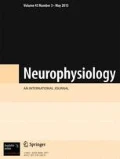Effective methods of evaluation of psychological pressure can detect and assess real-time stress states, warning people to pay necessary attention to their health. This study is focused on the stress assessment issue using an improved support vector machine (SVM) algorithm based on surface electromyographic signals. After the samples were clustered, the cluster results were fed to the loss function of the SVM to screen training samples. With the imbalance among the training samples after screening, a weight was given to the loss function to reduce the prediction tendentiousness of the classifier and, therefore, to decrease the error of the training sample and make up for the influence of the unbalanced samples. This improved the algorithm, increased the classification accuracy from 73.79% to 81.38%, and reduced the running time from 1973.1 to 540.2 sec. The experimental results show that this algorithm can help to effectively avoid the influence of individual differences on the stress appraisal effect and to reduce the computational complexity during the training phase of the classifier.
Similar content being viewed by others
References
S. J. Lupien, F. Maheu, M. Tu, et al., “The effects of stress and stress hormones on human cognition: Implications for the field of brain and cognition,” Brain Cogn., 65, No. 3, 209-237 (2007).
D. Giakoumis, D. Tzovaras, and G. Hassapis, “Subjectdependent biosignal features for increased accuracy in psychological stress detection,” Int. J. Human comput. Stud., 71, No. 4, 425-439 (2013).
R. Fernandez and R. W. Picard, “Modeling drivers’ speech under stress,” Speech Commun., 40,145-159 (2003).
J. A. Healey, and R. W. Picard, “Detecting stress during real-world driving tasks using physiological sensors,” IEEE Trans. Intell. Transp. Syst., 6, No. 2, 156-166 (2005).
W. Johannes, Augsburg Biosignal Toolbox (AuBT). User Guide. [http://emotion-research.net/].
G. Tartarisco, G. Baldus, D. Corda, et al., “Personal health system architecture for stress monitoring and support to clinical decisions,” Comput. Commun., 35, No. 11, 1296-1305 (2012).
J. Hernandez, R. R. Morris, and R. W. Picard, “Call center stress recognition with person-specific models,” Affect. Comput. Intell. Interact., Part 1, 125-134 (2011).
N. Sharma and T. Gedeon, “Objective measures, sensors and computational techniques for stress recognition and classification: a survey,” Comput. Methods Programs Biomed., 108, No. 3, 1287-1301 (2012).
S. Cheng, Q. Mo, and H. He, “Effects of office noise on staff health,” J. Environ. Health, 17, 154-155 (2000).
H. Jahncke, S. Hygge, N. Halin, et al., “Open-plan office noise: cognitive performance and restoration,” J. Environ. Psychol., 31, No. 4, 373-382 (2011).
A. Hogh, A. M. Hansen, E. G. Mikkelsen, and R. Persson, “Exposure to negative acts at work, psychological stress reactions and physiological stress response,” J. Psychosom. Res., 73, No. 1, 47-52 (2012).
V. N. Vapnik, The Nature of Statistical Learning Theory, 2nd ed., Springer Verlag, NewYork (2000).
O. L. Mangasarian and D. R. Musicant, “Successive overrelaxation for support vector machines,” IEEE Trans. Neural Netw., 10, No. 5, 1032-1037 (1999).
X. Li, Y. Wang, J. Song, and J. Shan, “Research on classification method of combining support vector machine and genetic algorithm for motor imagery EEG,” J. Comput.. Inform. Syst., 17, No. 12, 4351-4358 (2011).
Author information
Authors and Affiliations
Corresponding authors
Rights and permissions
About this article
Cite this article
Xin, L., Zetao, C., Yunpeng, Z. et al. Stress State Evaluation by an Improved Support Vector Machine. Neurophysiology 48, 86–92 (2016). https://doi.org/10.1007/s11062-016-9572-z
Received:
Published:
Issue Date:
DOI: https://doi.org/10.1007/s11062-016-9572-z




